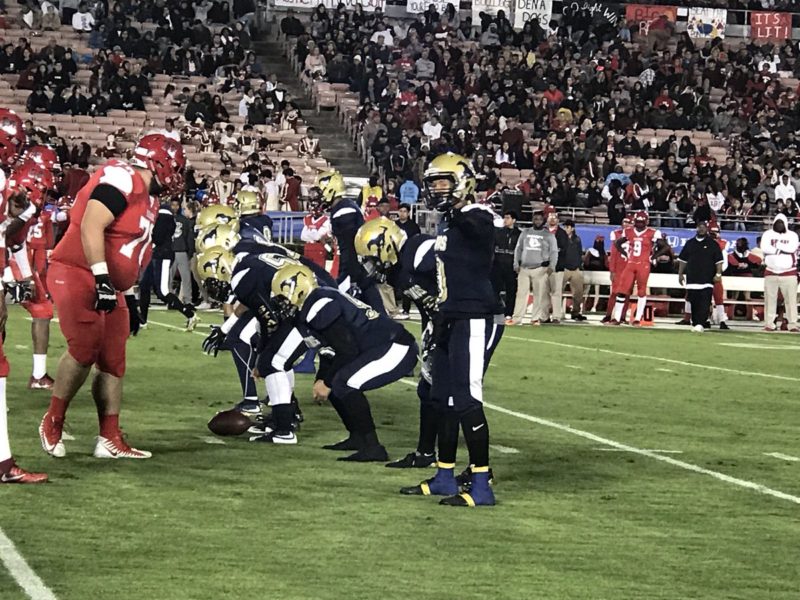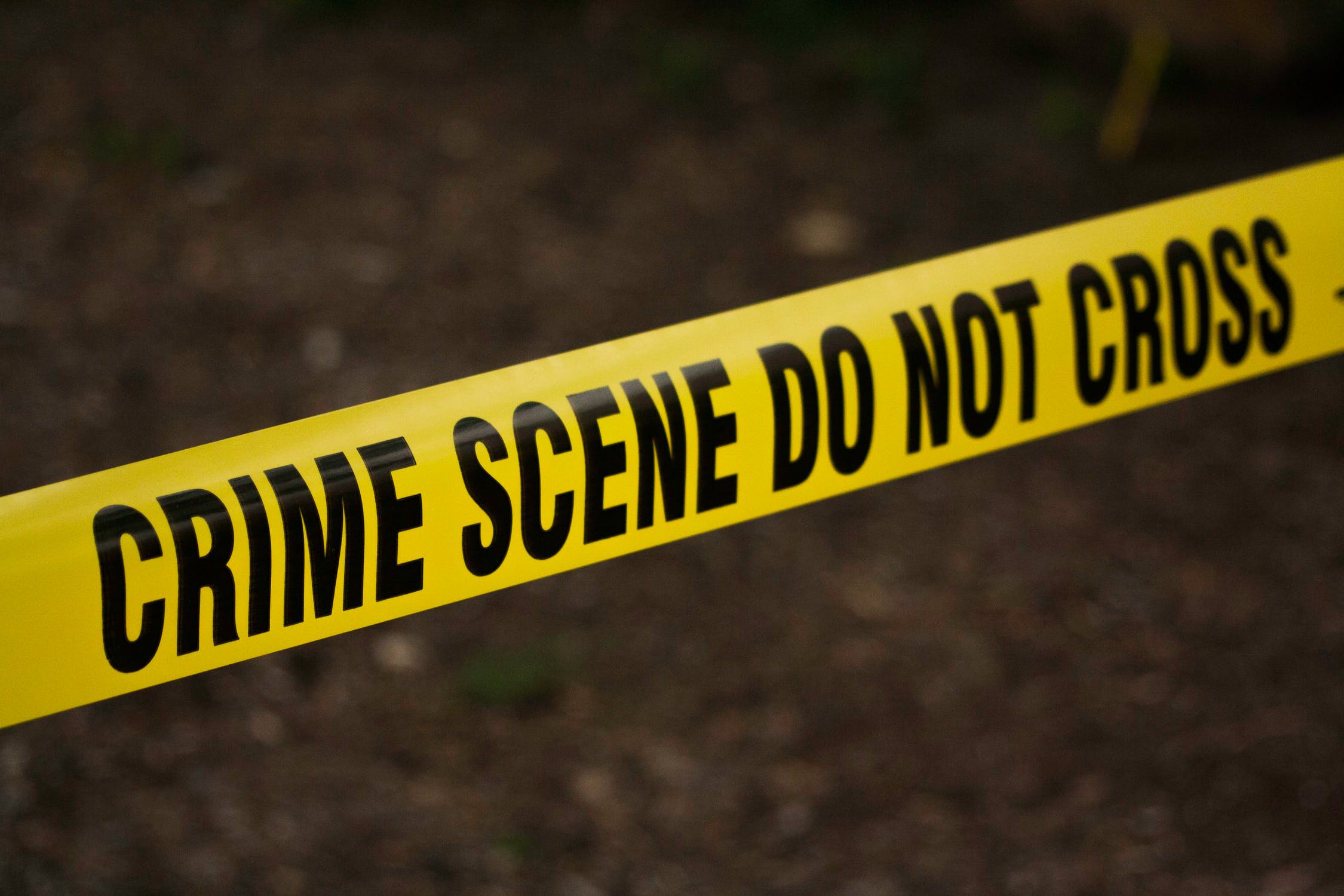
By May S. Ruiz
I love college towns – they’re typically alive with students either hurrying off to lecture, tutorial, or the library, or leisurely heading out for a cup of tea with friends. Mingling with the young crowd are usually tourists with a map in hand, trying unsuccessfully to find a specific site on the ‘Places to See While in (fill in the blank) Guide.’ Inevitably, they would have to ask one of the students to point them in the right direction.
Fortunately, we had a ‘personal’ guide during our visit to the beautiful city of Cambridge, England in mid-July; we definitely didn’t look like bewildered tourists. My daughter and I spent a week in town to attend her fiancé’s graduation (for his second Master’s degree) and he took us around.
Most Americans have heard of the University of Oxford but are not very familiar with Cambridge. These two universities have had rivalries dating back centuries. And while Oxford benefits from name recognition, Cambridge is considered the most prestigious in the United Kingdom. In the last decade the top three universities in the UK were Cambridge, Oxford (both in England), and St Andrews (in Scotland) until this year, when the League Table ranked St Andrews second to Cambridge and ahead of Oxford.

A university city and the county town of Cambridgeshire, Cambridge lies on the River Cam, about 50 miles north of London. While it’s better known for its university, there was already a settlement there before the arrival of scholars who were fleeing from the riots in Oxford in 1209 to find refuge. Thus, the university was founded.
The early colleges were established by the church and then by monarchs who wanted to create learning institutions. Surprisingly, for a university that for so long admitted only men, six of the colleges were even begun by women.
Before long, Cambridge became embroiled in religious and political dramas as when Henry VIII dissolved the monasteries and when his daughter Mary Tudor got backlash for her religious retaliations.
It was in Cambridge that English military and political leader Oliver Cromwell found many Royalist adversaries during the Civil War (1642-1651). He sent his henchmen to destroy treasures in the colleges’ chapels, which he called Catholic superstitious symbolisms.
Mixed in with these power struggles were riots instigated by townspeople who were fed up with the inequalities between the privileged colleges and their own poverty. (To this day, there is evidence of disparity as homeless people roam the streets – a jarring contrast against a backdrop of opulent buildings.)
As in all college towns, there is a mutual relationship between ‘Town & Gown.’ Students provide income to the universities and tourists are a source of livelihood for locals. Cambridge has approximately 125,000 permanent residents but it welcomes three million visitors annually who come to experience the amazing beauty, culture, and history it offers.
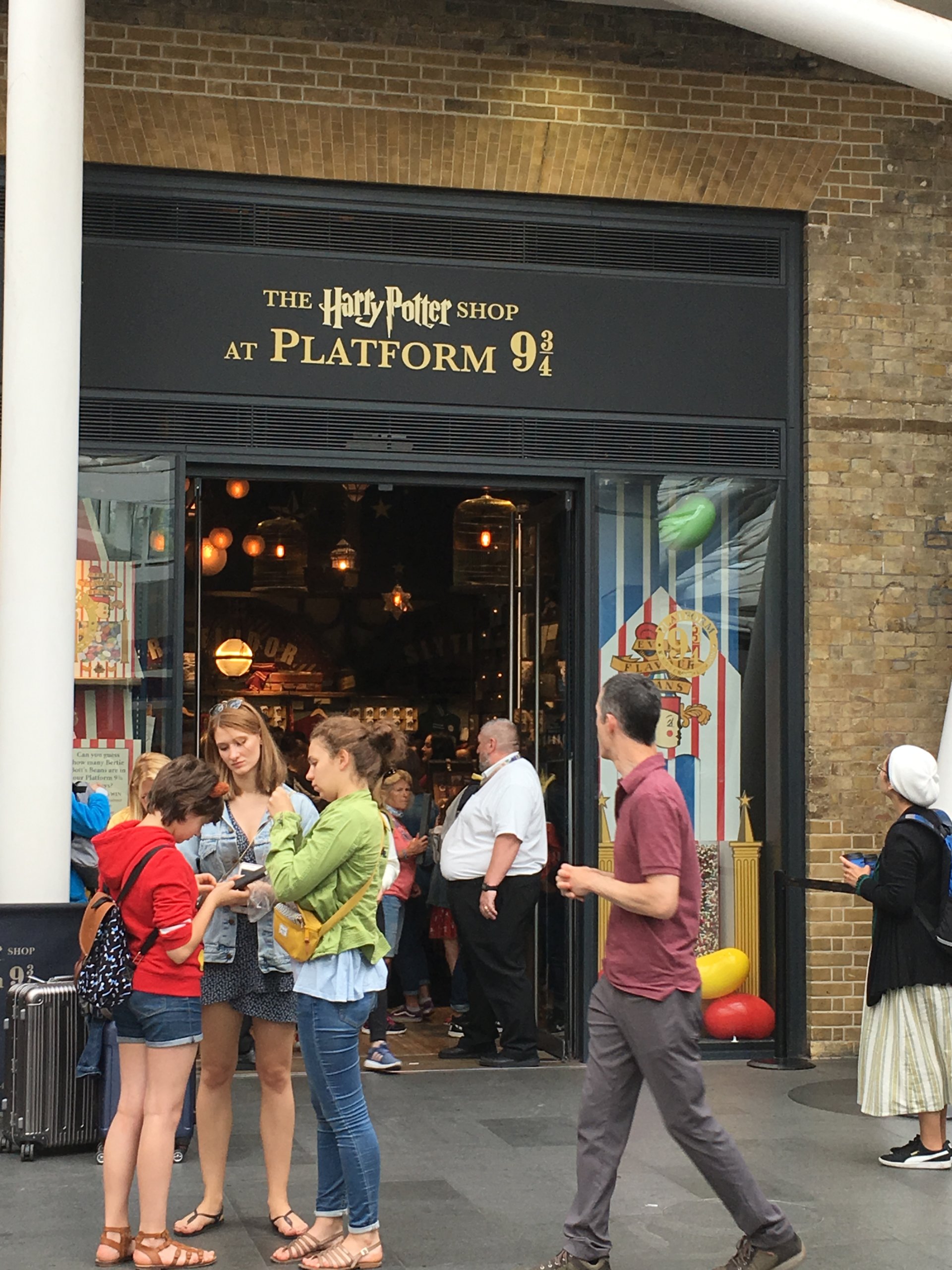
Our weeklong stay began when we arrived at London’s Heathrow Airport, from where we boarded the Heathrow Express to Paddington Station. Another train ride took us to King’s Cross Station. King’s Cross figures prominently in the Harry Potter books and films because it is from the station’s platform 9 ¾ that students take the Hogwarts Express. The Network Rail has taken advantage of this – it is now a tourist attraction. For 30 pounds, Harry Potter fans can have their picture taken as they pretend to push a shopping cart into the wall. Really.
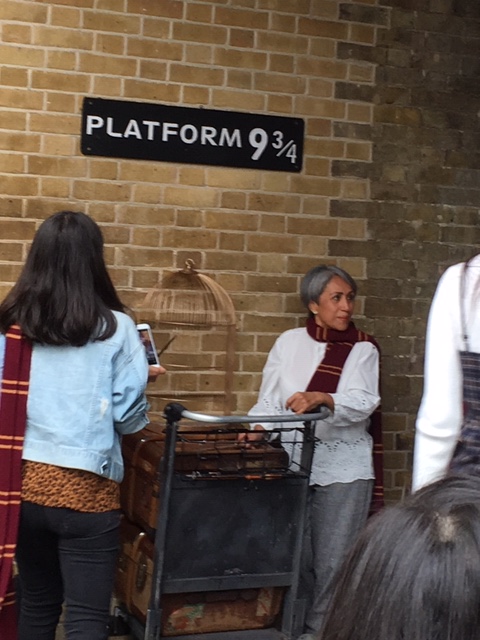
From King’s Cross we hopped on the GWR (Great Western Railway) for our non-stop journey to Cambridge. We stayed at the Tamburlaine Hotel, which is literally across the street from the train station. I don’t usually comment on the hotel where we stay, lest readers get the impression that this is a paid promotion for it, but will make an exception this time because I’m excited to acquaint you with Tamburlaine.

A boutique hotel, the Tamburlaine isn’t huge and impersonal like chain hotels. It looks more like a big, welcoming residence where you’ll want to invite your friends to hang out. Upon entering the lobby on the ground floor, comfortable sofas beckon you to sit by the fire. Shelves stacked with old, leather-bound books complete the warm ambience. This place is just like my own house – there are books everywhere – and I instantly felt at home!
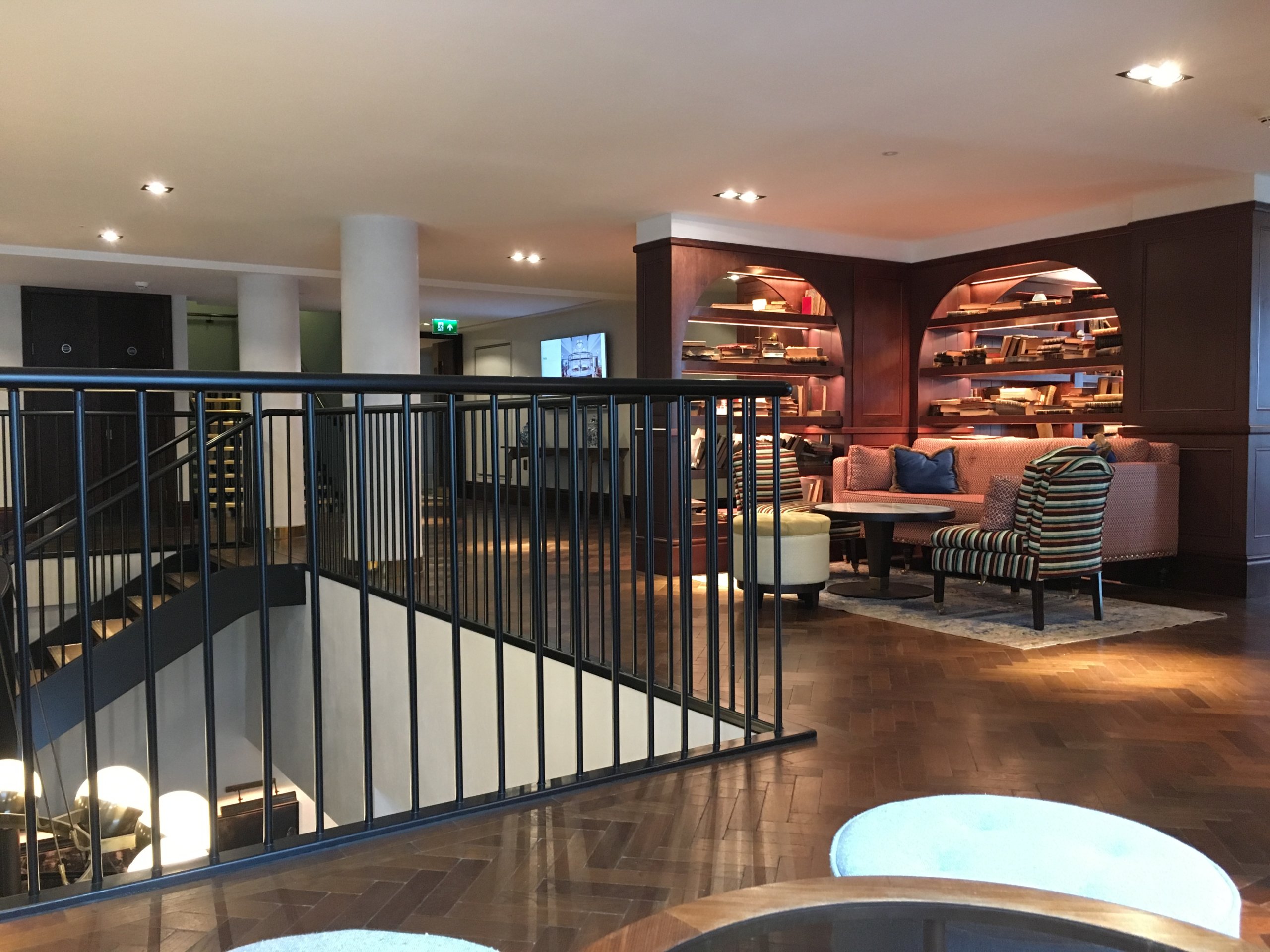
The first floor (which is actually the second) is a public space divided into several seating areas. One section has a long table which can be utilized for a conference or a meeting; there’s also a corner alcove where a couple can relax in front of some bookshelves. My favorite spot is an armchair next to the window where I sat to alternately read a book and watch people walking on the street level below.
However, I didn’t travel all the way to Cambridge to read a book; I wanted to explore the city. Let me preface this ‘travelogue’ by saying that my two young companions and I had to tailor our sight-seeing around graduation activities that I mentioned earlier. So, if you’ve ever been to Cambridge and are familiar with the town’s lay-out, you might notice that there were times when there was no rhyme or reason to how we went about our adventure.
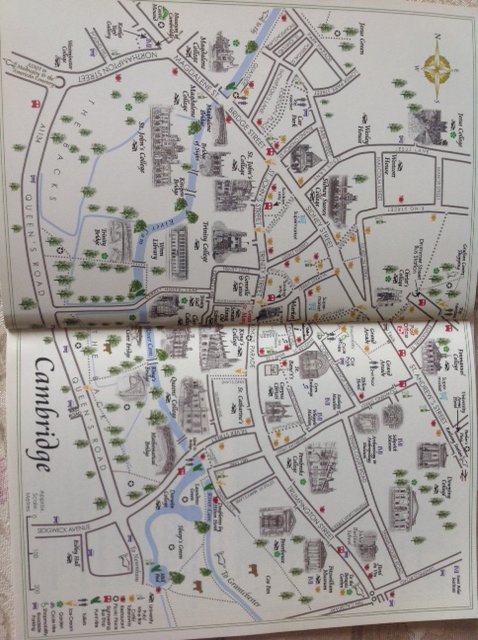
We arrived in Cambridge at midafternoon and we simply unpacked and took it easy. The town center is two miles away, which is quite a trek for Southern Californians (who are notorious for parking nearest to the building entrance because we’re too lazy to walk). Happily, we were in no hurry, so we simply meandered and observed all the fascinating things amidst us.
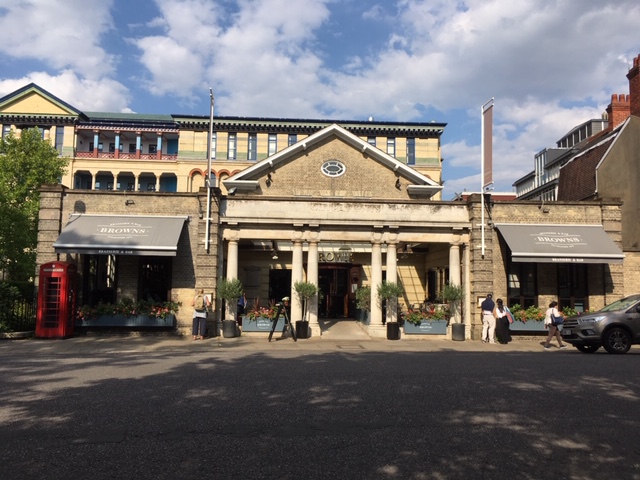
Dinner was at Brown’s Brasserie & Bar, a delightful restaurant which faces the Fitzwilliam Museum on Trumpington Road, the main thoroughfare. It’s quite popular among locals and tourists and could get really crowded but we were smart enough to make reservations. Its extensive menu has several options for every diner’s food requirement, including vegan, vegetarian, and gluten-free fare. I always opt for a prix fixe meal because it gives me a tasting of courses at a great price. I would definitely recommend it, in case you visit Cambridge and dine at Brown’s.
The following day we went to the Fitzwilliam Museum to incorporate my companions’ visit with a friend there. Unlike in the United States where museums charge anywhere from $20 to $25 for admission, in the United Kingdom people get in free.
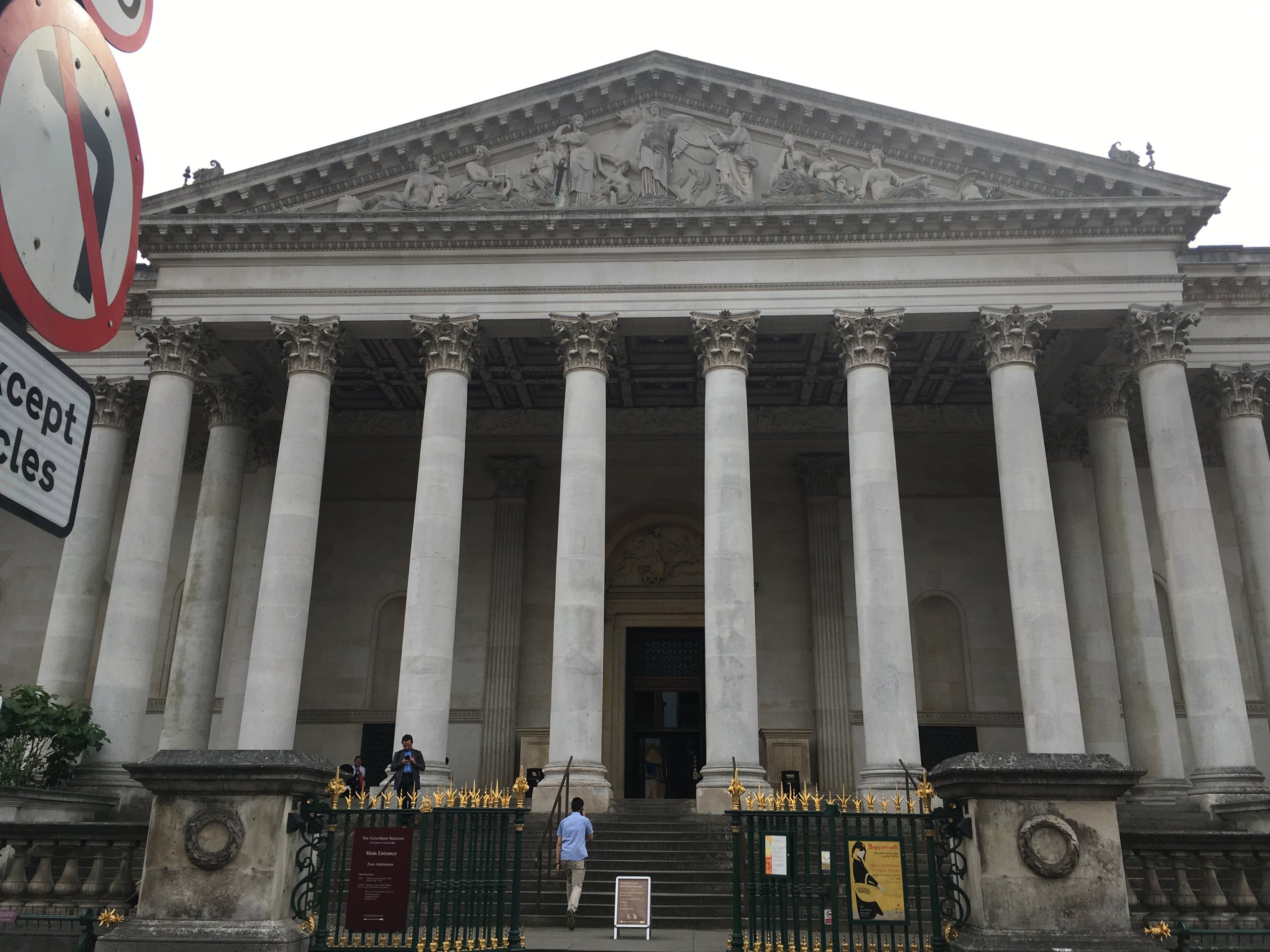
Here’s a brief history and description. In 1816, Richard, seventh Viscount Fitzwilliam and keen art collector, bequeathed his library and paintings to the University. He also gave 100,000 pounds to build a place to house half a million treasures of national and international significance, covering Egyptian, Roman, and Greek collections.
Coins, ceramics, and textiles are likewise displayed. Medievalists and artillery enthusiasts will find an impressive array of armors and weapons. The museum has a vast collection of ancient and modern manuscripts – John Keats’s ‘Ode to a Nightingale,’ a valuable series of Handel manuscripts, and autographed compositions by Purcell, Bach, and Mozart. My favorite Gallery is the one that holds various paintings ranging from Rembrandt and Rubens, to Picasso and Barbara Hepworth.
Today the Fitzwilliam is hailed as ‘one of the greatest art collections in England and a monument of the first importance.’ I can attest that the claim is not without merit.
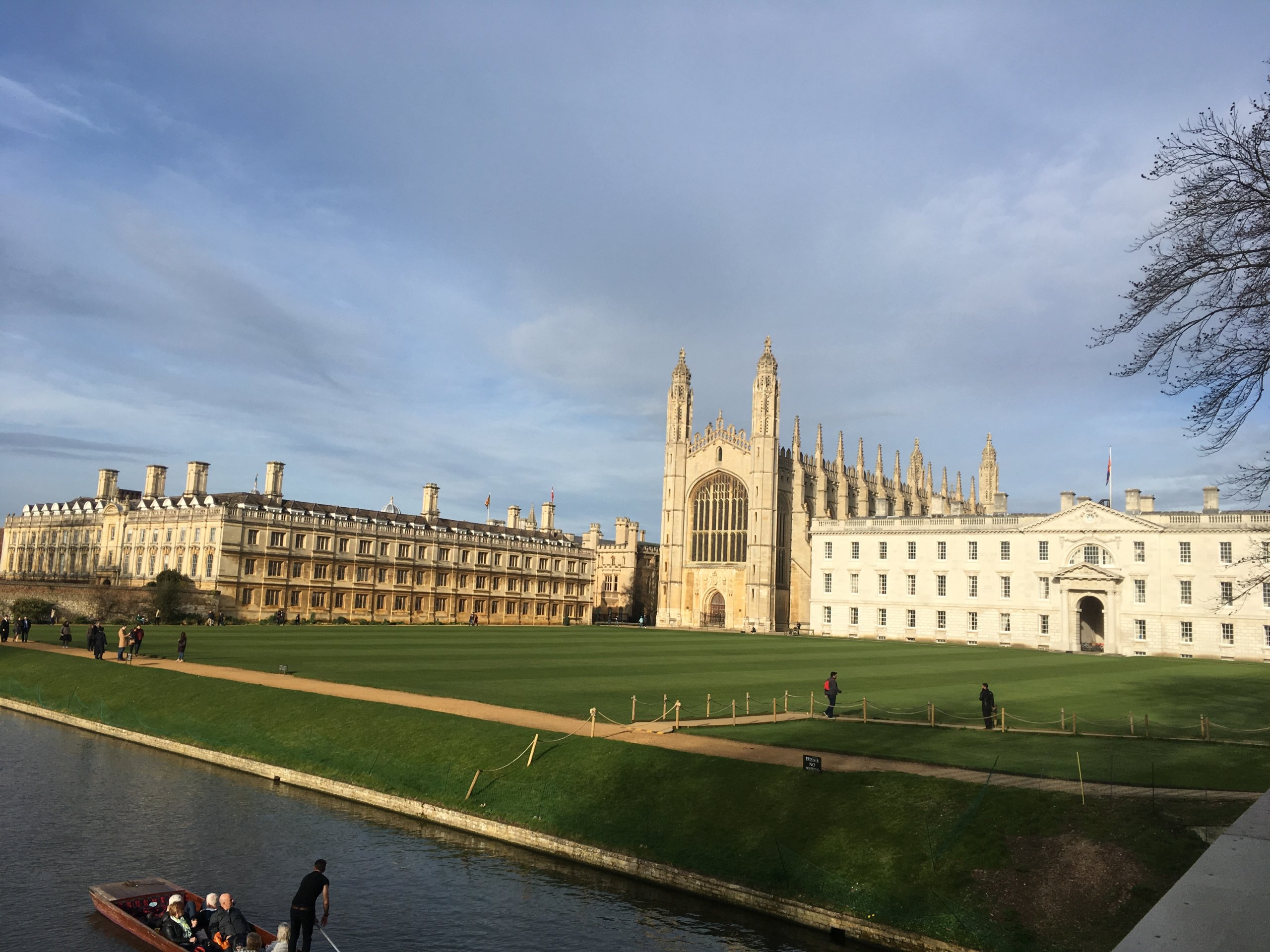
Being an education writer, I was interested to see at least one college. Cambridge has a total of 31 colleges but, since we were there on a limited time, we chose to tour only King’s College and Chapel. It was established in 1441 by King Henry VI, when he was all of 19 years old. He also founded Eton School and, until 1873, King’s College exclusively accepted Eton students who were automatically granted a degree without having to take the exams. Many notable personalities graduated from here – Britain’s first Prime Minister Robert Walpole and renowned computer scientist and logician Alan Turing, among them.
King’s has inspired many a poet to sing its praises. And for good reason – it is a magnificent structure! But as grand as it is, the young King Henry’s original plans were even grander, which included a giant lake. No one knows who the architect was, but Reginald Ely was the master-mason who oversaw the work on the building. It is arguably the most photographed Cambridge college.
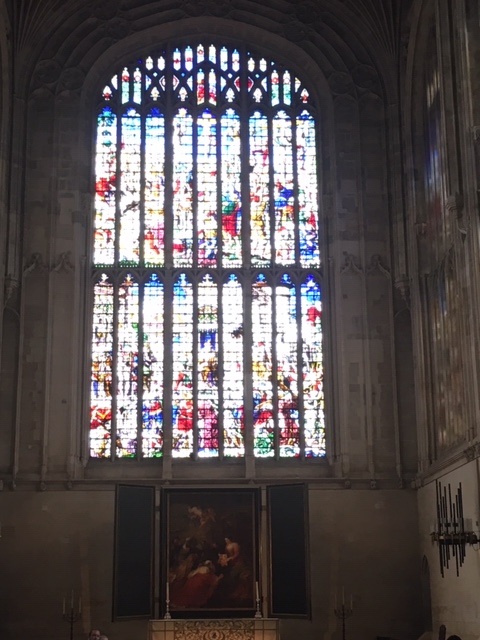
Construction on the Chapel began in 1446 when King Henry laid the first stone but he never saw it finished – that would happen 90 years and four kings later. It is hailed as one of the finest examples of late Perpendicular Gothic English architecture.
We didn’t go inside Trinity College but it’s the grandest of all the colleges in Cambridge and if you’re ever there, I hope you get a chance to visit it. It was founded by King Henry VIII in 1546; its chapel was completed by his daughter Mary; and its library was designed, free of charge, by one of the most highly-acclaimed English architects in history, Sir Christopher Wren. It likewise has the lofty reputation of educating 32 Nobel Prize winners and alumni, including Sir Isaac Newton, Alfred Lord Tennyson, and HRH Prince Charles. According to lore, the poet Lord Byron once enraged college authorities by bathing in the fountain in front. There is also a small apple tree on the lawn which is descended from the one whose falling fruit enlightened Newton about the concept of gravity.
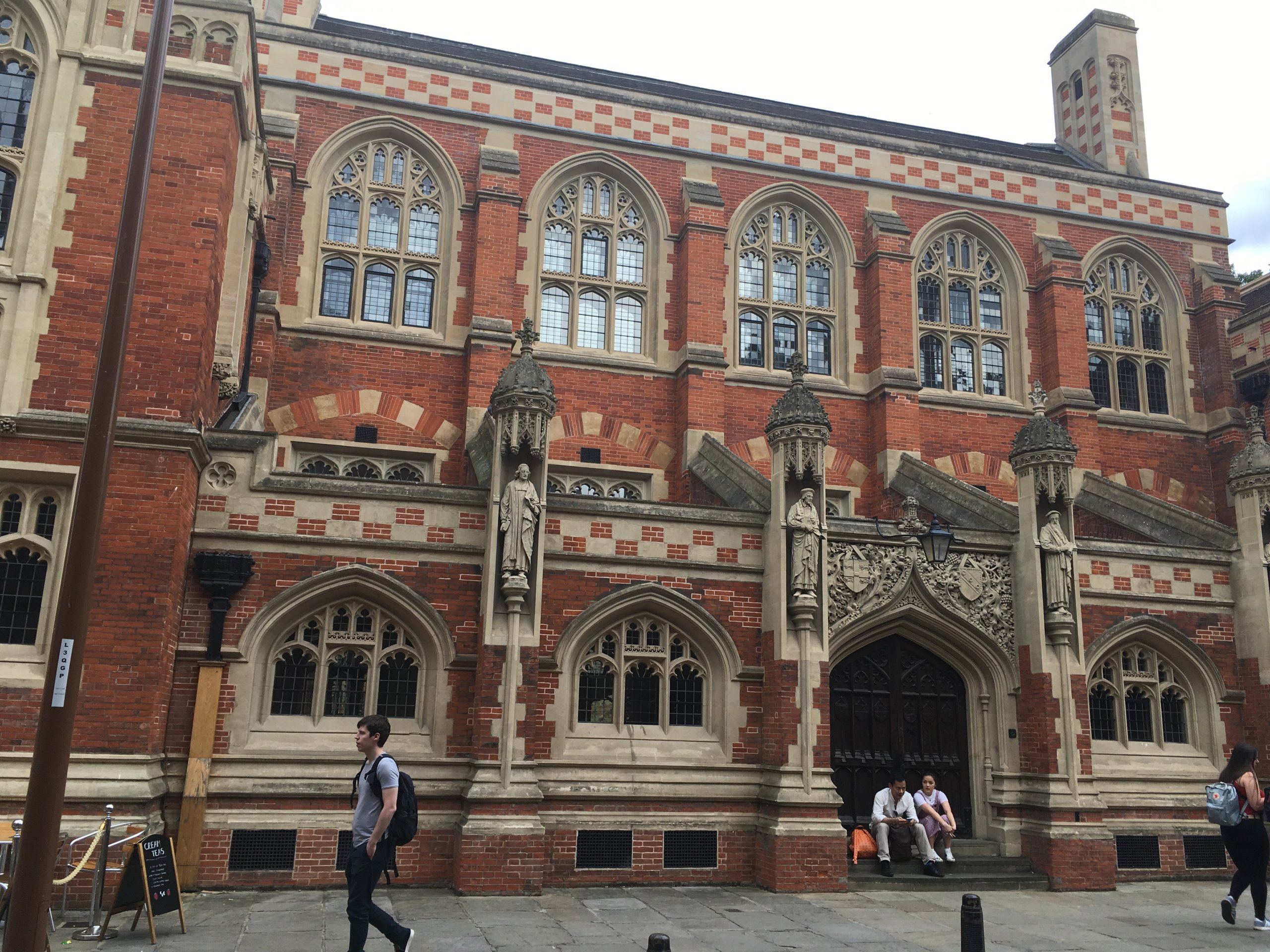
Until his graduation, my daughter’s fiancé was attending St Catharine’s (students refer to it as St Cath’s) and he proudly showed us the college. It was established in 1473 by Robert Wodelark, the third Provost of King’s College. Some of its alumni include John Addenbrooke, who founded Cambridge’s famous hospital, and known film personalities – Sir Ian McKellen, Rebecca Hall, Ben Miller, among others.
While we weren’t able to squeeze in visiting other colleges, we glimpsed several of them as we made our daily walks around town.
Every tourist should see the River Cam, as we did. It has had a major influence on this town for 2,000 years. Cambridge became rich from trading because it was accessible from the sea; small boats used the river as a trade route before the advent of the railway. Today River Cam is the site for recreational activity and the shallow boats which were once used for transporting goods and animals are now utilized for punting.
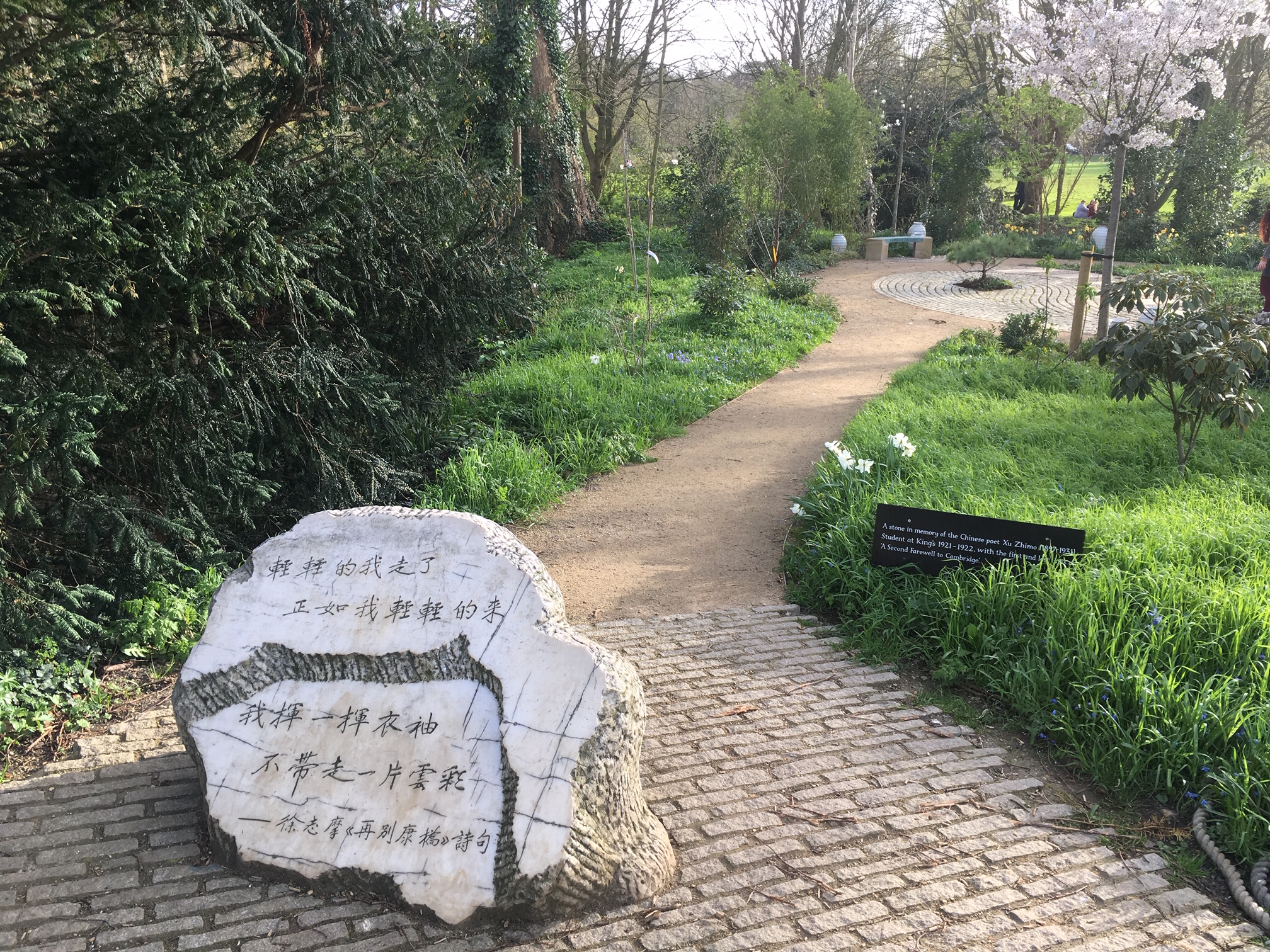
It is said that all Cambridge seniors punt here one last time before they graduate. It’s so memorable that one King’s College alumnus, Xu Zhimo, who later became a renowned Chinese poet, refers to it in a poem he wrote, ‘Taking Leave of Cambridge Again.’ He is immortalized in a small garden near King’s Bridge. In 2018 a stone of white Beijing marble that displays the first and last two lines of his ode was installed. Stone steps, on which the rest of his poem is carved, wind around the garden and end at a ‘yin and yang’ formation.
Here is a portion of his poem translated:
Softly I am leaving,
Just as softly as I came;
I softly wave goodbye
To the clouds in the western sky.
The golden willows by the riverside
Are young brides in the setting sun;
Their glittering reflections on the shimmering river
Keep undulating in my heart.
The green tape grass rooted in the soft mud
Sways leisurely in the water;
I am willing to be such a waterweed
In the gentle flow of the River Cam.
Called the China-UK Friendship Garden, or Xu Zhimo Garden, it is a tranquil space during the summer months when tourists flock to the area. We lingered there to escape the unexpected heat wave.

The River Cam is located in the area to the east of Queen’s Road where several colleges back on to it. Aptly called ‘The Backs,’ it is very picturesque that some claim the view is one of the top ten in England. A portion of it is a field where cows leisurely graze and freely roam, a charmingly surprising sight. Sometimes an entire herd will decide to venture on the path, to the consternation of students who get held up on their way to class, as they wait for the cows to disperse.
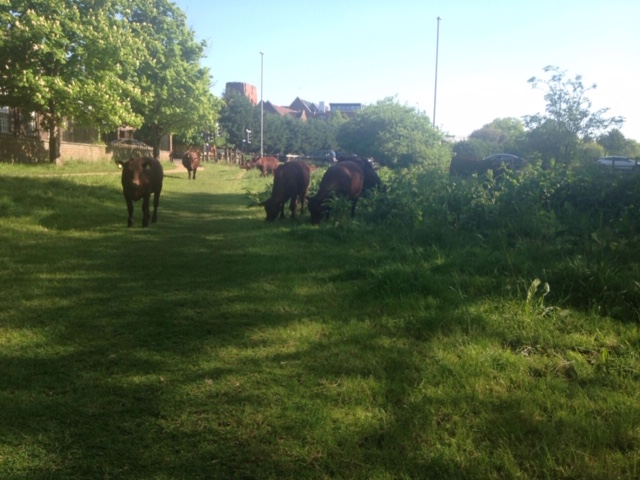
You can’t miss the Market on Crescent Street; you’re bound to come upon it as you wander around the city. For over 1,000 years, it has been a source of food and goods for locals, students, and tourists. From one day to the next, the market has an ever-changing coterie of vendors selling a wide array of items – fruits and vegetables, souvenirs that range from fridge magnets to sweatshirts, freshly baked breads and pastries or fresh from-the-oven pizzas. We enjoyed some blueberries and smoothies and perused the interesting things displayed on the stalls; I bought a few tchotchkes to take home.
We weren’t there in the mornings to see the sellers set up shop but we saw them pack up almost every single afternoon (at 5:00) during our week in Cambridge. It was quite amazing to watch them efficiently load their things – stalls and all – into vehicles of every make and model.
Interspersed between our Cambridge walks was a drive to the cathedral city of Ely, about 14 miles away. A quaint town, it is the 9th least populated city in the United Kingdom. Its most famous attraction is the Ely Cathedral, which predates the town. Built when Ely was a small settlement, the town grew around it.
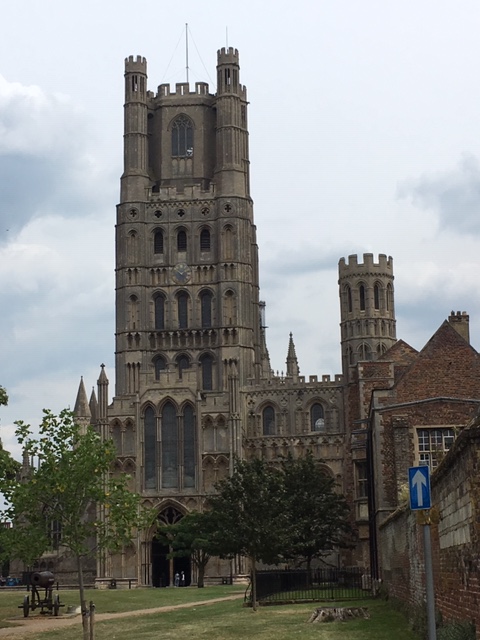
In fact, one can get to the cathedral by walking past a small town square. Local retailers – from plumbing suppliers to stationers, gardening stores to souvenir shops, pizza parlors to cold creameries – dot the periphery while tables and chairs are neatly arranged in the center. I can imagine townspeople gathering there at the end of their workday or after Sunday service. It’s reminiscent of a time before the tech age, when people weren’t merely texting each other.
The central octagonal tower is the most distinctive and celebrated feature of Ely cathedral. Lady Chapel, a large free-standing edifice, is linked to the north aisle of the chancel by a covered walkway. The West Tower is open for those who like climbing heights; tours are held at intervals and are led by guides who tell the history of the cathedral.
From the South Triforium at Ely Cathedral, one can walk up a spiral staircase and visit the Stained Glass Museum on the second level. It has a collection of stained glass windows of national importance from the 13th century to the present.
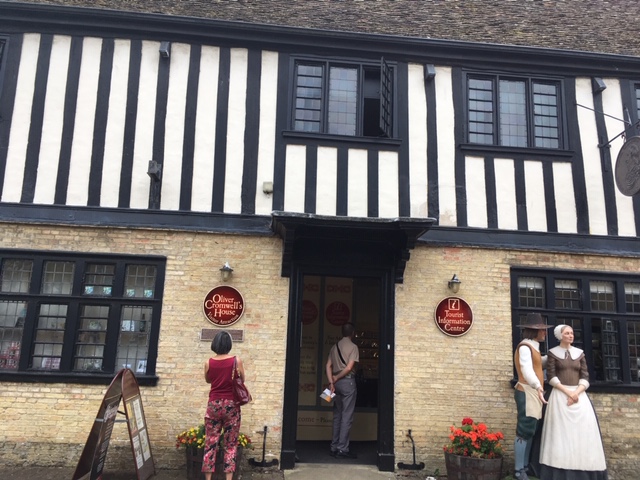
A short stroll away from Ely Cathedral is the house where Oliver Cromwell and his family lived from 1636-1647. It is a half-timbered building that once served as the vicarage for the nearby St Mary’s Church. It is the only surviving Cromwell residence other than Hampton Court Palace in London. For several years it was a pub aptly called ‘Cromwell’s Arms.’ Today it is a visitor attraction and is the Ely Tourist Information Centre.
Everywhere I go, I end up stopping at a bookstore and Waterstone’s is my favorite one of all. It’s a prettier version of Barnes & Noble and you can find one in all major cities in the U.K. It usually occupies several stories, with each level dedicated to specific book genres. It has nooks, seating areas, and window seats where one can spend several glorious hours of uninterrupted reading.
Being bibliophiles, we made an appointment to visit The Parker Library at Corpus Christie College. It is significant in that it is the only library in Cambridge with a single benefactor, Matthew Parker. He was born in 1504 in Norwich to a prosperous weaver (weaving was a major industry in Medieval East Anglia).
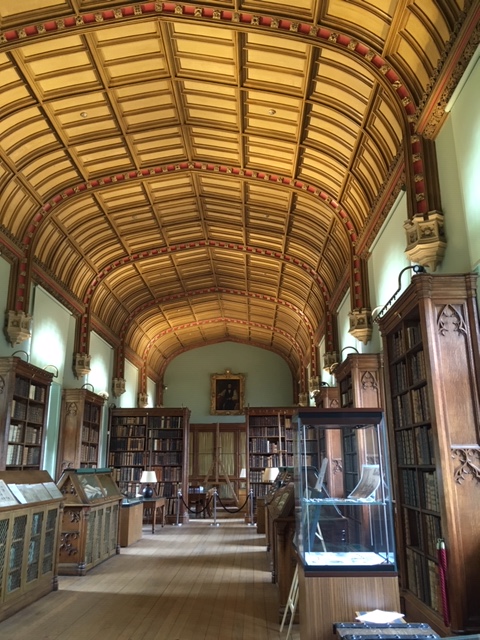
Parker was believed to have attended Corpus Christi in 1520 and was elected Bible clerk of the college in 1521. He graduated in 1525 and was ordained as a priest in 1527. Because of family connections in Norwich, he became chaplain to Queen Anne Boleyn, second wife of King Henry VIII. Among the medieval collections in the library is a volume of autographed letters he assembled and indexed himself, with original specimens of correspondence from prominent figures of Lutheranism and English Reform – Anne Boleyn, Erasmus, Luther, Melanchthon, Calvin, and others.
As we left Corpus Christie, we espied several tourists taking pictures of a rather strange sight on the corner of Bene’t Street. A more recent fascination, the Corpus Clock never fails to attract a large crowd since its installation in 2008. Conceived and funded by John C. Taylor, it took design engineer Stuart Huxley and a team of 250 people five years to create. It was unveiled by physicist Stephen Hawking.
While it looks futuristic, the Corpus Clock honors the skills of 17th and 18th century clockmakers, as well as six new patented inventions. No computers are involved; the only electricity used is to wind the mechanism and light the LEDs that display the time in hours, minutes, and seconds. Taylor wanted to show how a clock works by turning the mechanism inside out, to reveal the largest ‘grasshopper escapement’ in the world.
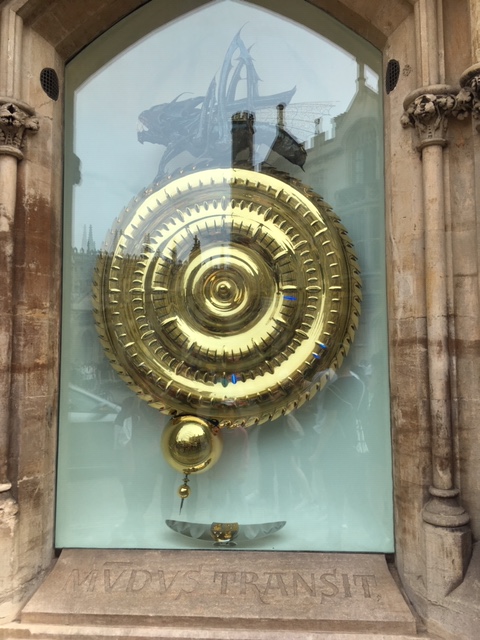
The sinister grasshopper-like creature on top of the Corpus Clock is a ‘Chronophage’ (time-eater) sculpted by Matthew Sanderson. Every 15 minutes it raises its tail threateningly, before finally stinging each hour to death, to the sound of a chain rattling into a wooden coffin. It has an unnerving, irregular movement – sometimes the pendulum will pause and the LEDs flash, slowly at first, then chase as if to catch up. It’s all quite brilliantly deceiving because the clock, in fact, reads accurately every five minutes.
From Bene’t Road, we crossed King’s Parade and went to Ryder and Amies. One of the best known university outfitting companies, it has been serving the university for over 120 years under the management of one family. It is an integral part of university life – providing students with neckties, hoodies, pins, among other things. The windows display a striking array of college colors and clothing. It’s also a place to get all kinds of mementos and I left the shop with a bagful of souvenirs and an empty wallet. Sigh.
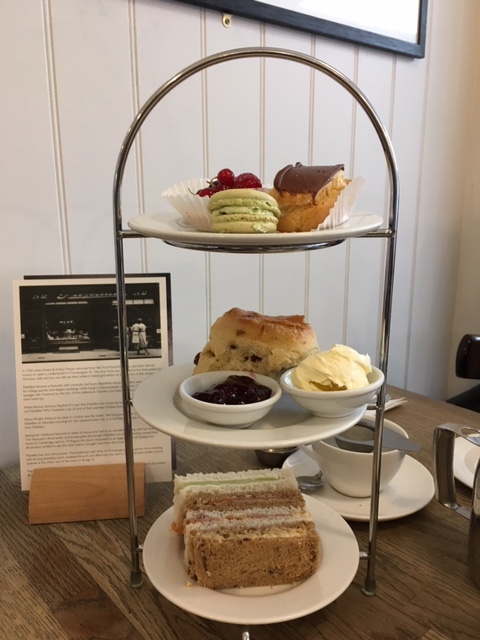
We were told that we should never leave Cambridge without going to Fitzbillies on Trumpington Street. This fabulous cake shop and restaurant has been making the city a happier place since 1922. A cup of tea and some sweets sounded like a wonderful idea after a day of sightseeing and shopping. And true to what has been advertised, our tea experience at Fitzbillies was an English indulgence in its finest form.

Graduations are held at the Senate House on King’s Parade. Successful students process along King’s Parade from their college, enter the imposing building, and leave from its side door into Senate House Passage as graduates. My daughter’s fiancé graduated at Senate House on the 19th of July. It was indeed quite moving to watch him and his classmates as they emerged St Catharine’s and went through this time-honored ritual.
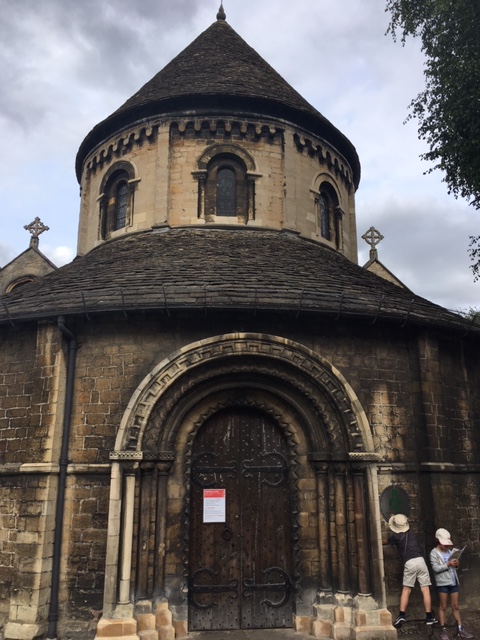
To celebrate his graduation, we decided to have dinner at The Ivy on Trinity Street. We took a meandering route from our hotel and, walking along Round Church Street, chanced upon the Church of the Holy Sepulchre. Also called The Round Church (I don’t know if it was named that because of the street or vice-versa), it is the second oldest building in Cambridge and one of only four round churches in England. The shape emulates its counterpart in Jerusalem. While it has changed much over the years – before the 1800s its tower was polygonal; the shape of its windows has been modified; and, during World War II, the east window was destroyed by a bomb – but the original ring of arches, decorated by curious stone faces, remains.
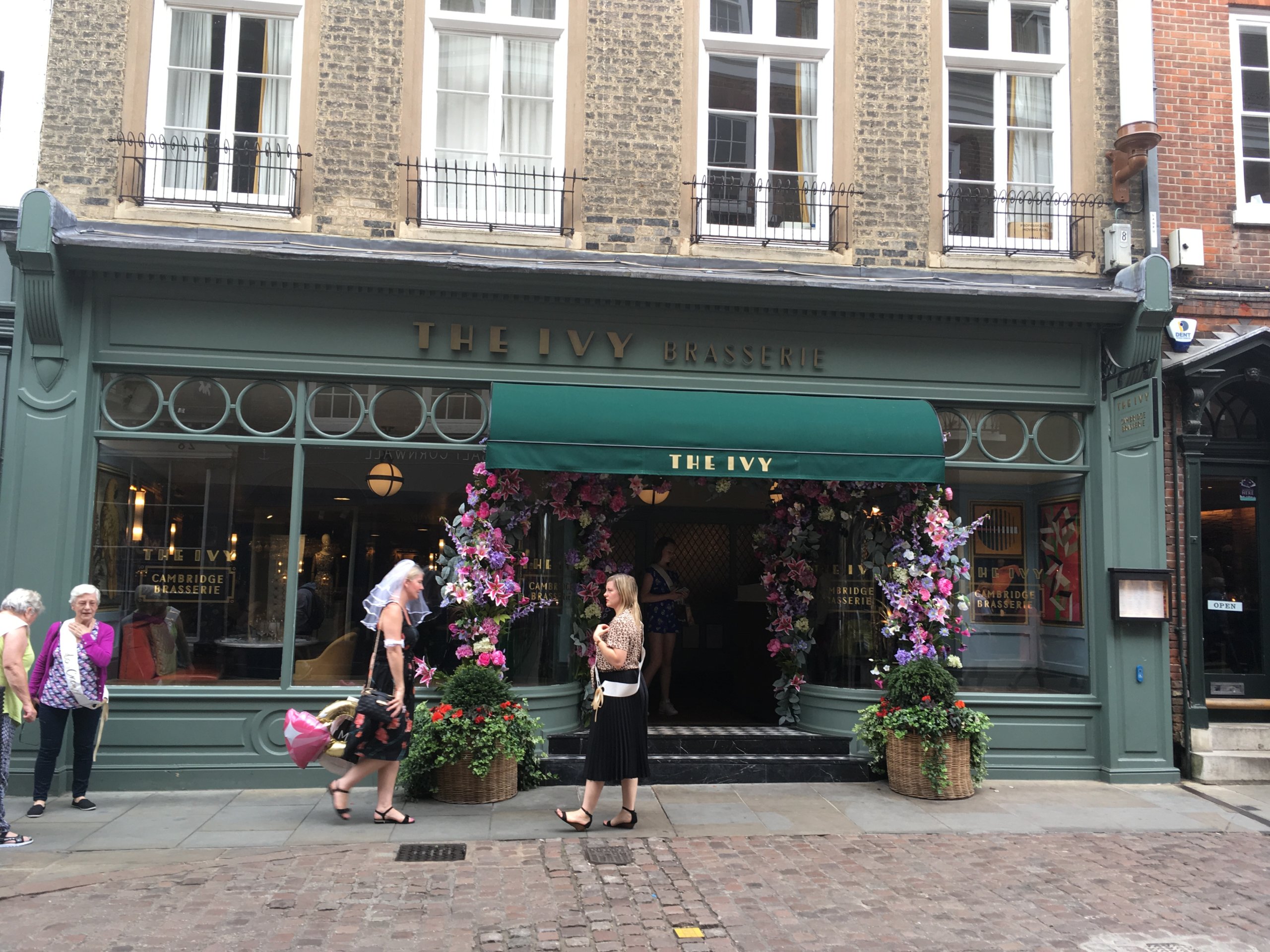
A sumptuous dinner at the fabulous Ivy was the perfect cap to an extraordinary week in this beautiful city. While Cambridge is home to the best university in the United Kingdom and is a popular tourist attraction, it has retained all the charms and atmosphere of a small town. That magnificent, soaring structures abound only adds to its uniqueness, making for one unforgettable experience.



